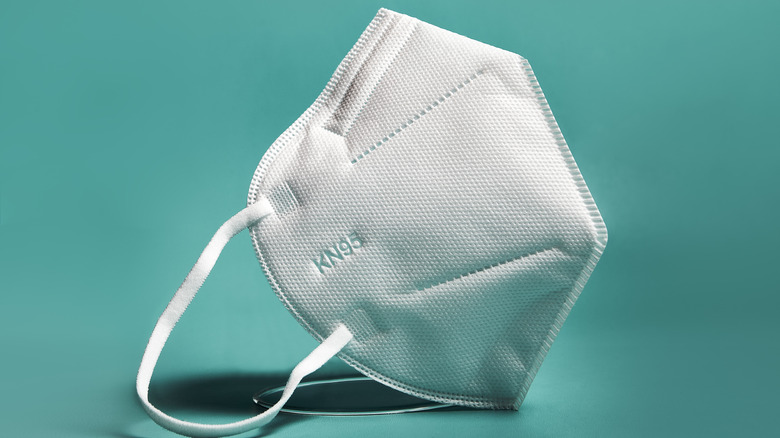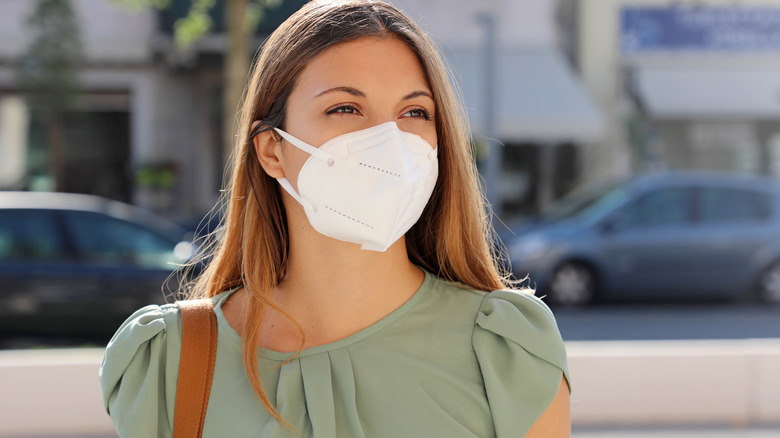Here's When You Should Switch Out Your KN95 Mask, According To Experts
We may receive a commission on purchases made from links.
In the year since the COVID-19 pandemic took hold in the U.S., we've seen lockdowns and partial openings, remote and in-person learning, social distancing and social gatherings. The vaccines and boosters have been an important weapon in the fight against illness, but medical experts are still advising preventive measures such as mask-wearing in public. Now, even those recommendations are changing. Although "any mask is better than no mask," the CDC is recommending the wearing of "respirator" masks rather than cloth masks or even surgical "procedure" masks. (Bad news for everyone who ordered a wardrobe of cute cloth masks last year.)
The close-fitting, tightly woven filtration masks, marked with the identifier KN95, have been determined to be best at blocking the airborne respiratory droplets that spread the coronavirus. The CDC particularly recommends this mask for people who are unvaccinated, as well as those who are immunocompromised, caring for someone with the virus, or working at a public service job such as bus driving or retail work. A KN95 mask can also reduce your risk of getting sick at a party or other large gathering.
KN95 masks are more expensive than other varieties — a multipack averages between $30 and $60 on Amazon — but they're also reusable, which makes them more cost-effective than the disposable surgical kind. But just how reusable are they? When is it time to ditch your mask and reach for a fresh one?
Use good judgment when reusing KN95 masks
Whereas a surgical mask is meant to be used only once and then discarded, a KN95 mask is more durable and, in most cases, can be worn more than once. The key is how long it's worn and what condition it's in. Michael G. Knight, an assistant professor of medicine at George Washington University, told The Washington Post that a respirator mask can be used more than once if it's worn only for short-term outings like trips to the supermarket. People who wear a mask at work for hours at a time, or who wear it during workouts and other strenuous activities, are more likely to soil it to the point where it should be thrown out sooner.
In most cases, a KN95 mask should last about 40 hours (roughly 5 to 7 days), experts told CNN. For best results, buy several masks and rotate them throughout the week, letting one to two days pass before wearing any one mask again. Store them in a paper or mesh bag to let them air out.
Because they're designed to fit snugly around the nose and mouth, KN95s should be thrown out if the elastic ear loops become loose or the fabric begins to gap around your face. Masks that are visibly soiled, wet, or contaminated with mucus or saliva should also be tossed. If you put on a used KN95 and notice that it seems hard to breathe, that's a sign that it's less effective. When in doubt, throw it out.

